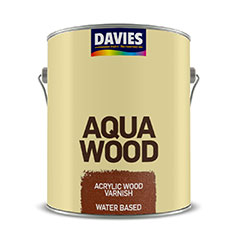
Many first-time homeowners or families who want to repaint their houses get overwhelmed by the task of selecting the right colors of paints, and often mistakenly think that choosing and combining different colors is a skill that is exclusive to professional interior designers. In this section, you will find tips on how to confidently explore color combinations for your home like a pro!
![color-wheel[1]](https://daviespaints.com.ph/daviespaints.com.ph/storage/2022/05/color-wheel1.jpg)
Using the Color Wheel
The first thing most of us learn about color is the color wheel. It may seem technical, but really, it’s just like a rainbow – it’s just one way of arranging colors. The color wheel gives us a unique and important insight into the relationships between colors.
Primary colors are the three most basic: blue, yellow, and red. Just like prime numbers in mathematics, these cannot be broken down into simpler colors, but can be combined to make all the other colors. You can find them in the color wheel as a triad, equidistant from each other.
Secondary colors lie in between primary colors, indicating that they are the combination of those colors. Between red and blue is violet; blue and yellow makes green; yellow plus red makes orange. Follow this principle and you get the tertiary colors that combine one primary and one secondary color. The more extensive the color wheel, the more degrees of combinations it can show.
Basic Properties of Color
In the real world, we rarely use pure colors together. There are certain properties of color that help us achieve harmony and balance as we combine different colors, in particular, for home interior design.
Hue
Hue is defined as pure color. When you say “green” or “blue”, what that usually means is what the color is, its most basic identity that differentiates it from the rest.
Tint
A tint of a color is the result of mixing an original, pure color with white. When you say you are “tinting” a color, it means you are adding white to it, making the tint lighter than the original color.
Shade
A shade of a color, on the other hand, is the result of mixing an original color with black. A shade of a color is darker than the original color.
Tone
Broadly speaking, any variation of an original color combined with a neutral is a tone. But here, we use a more specific definition: a tone is a result of mixing an original color with grey. Adding different strengths of grey (varying amounts of black and white) results in a change in a color’s tonal value. A tone is softer than the color you started with.
Color Schemes
We use the basic color wheel to create a variety of color schemes – a combination of colors based on their relationship in the wheel. Whether they are side by side, opposites, or a combination of both, color combinations have been studied under both the scientific and artistic realms as colors that go well together visually. (Note that these color schemes are not strictly for combining just hues, but combining the varying properties of colors as well.)
![monochromatic-color-scheme[1]](https://daviespaints.com.ph/daviespaints.com.ph/storage/2022/05/monochromatic-color-scheme1.png)
MONOCHROMATIC
A combination of the different tints, shades, or tones of a base color or hue creates a monochromatic (single-color) scheme. For example, if you choose a blue hue as base; you can then combine this with baby blue or sky blue (lighter blue tones) and navy (a darker blue shade).
TIP: Add one or two neutral colors such as white or grey to spruce up your color scheme.
ANALOGOUS
An analogous color scheme is composed of three colors that are adjacent (side by side) in the color wheel. For instance, if you pick blue as your base color, you may choose one of these combinations: blue/blue-green/blue-violet; blue/blue-violet/violet; or blue/blue-green/green. This creates a natural harmonious blend of colors that can work for any space.
TIP: When doing a multi-color harmony, do not use all three colors in their pure original hue, as they will clash. Instead, pick one base color, then explore combinations using the other two hues in a lighter tint or darker shade.
![analogous-color-scheme[1]](https://daviespaints.com.ph/daviespaints.com.ph/storage/2022/05/analogous-color-scheme1.png)
![complementary-color-scheme[1]](https://daviespaints.com.ph/daviespaints.com.ph/storage/2022/05/complementary-color-scheme1.png)
COMPLEMENTARY
This color scheme is all about contrast. This entails choosing two colors that are directly opposite each other on the color wheel. Classic complementary color combinations are primary + secondary: red/green, yellow/violet, and blue/orange. To use these combinations effectively and harmoniously, you will need to balance the contrast by playing around with combining different tints and shades of the two colors.
TIP: Aside from tints and shades, you can also experiment with the tone (can also referred to as saturation) of a color – varying degrees of intensity resulting from combining the pure color with neutrals (such as grey, or even sepia).
TRIADIC
As the name suggests, a triadic color harmony is composed of three colors. In technical terms, these are three colors that are equidistant from each other in the color wheel. The most basic of the triads are the primary colors (red/blue/yellow) followed by the secondary colors (green/orange/violet). You may think of it as a three-color version of a complementary color scheme.
TIP: When you use any color combination, use the concept of dominance – not all hues are to be used equally in terms of area; assign a dominant color and use the other two as accents or supporting colors.
![triadic-color-scheme[1]](https://daviespaints.com.ph/daviespaints.com.ph/storage/2022/05/triadic-color-scheme1.png)


